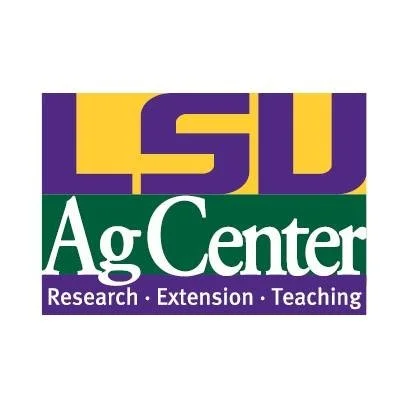While there are more than 60 species of mosquitoes in Louisiana, temperature and precipitation are most often the primary drivers of annual changes in presence and abundance. On the cold extreme of temperature, the entering and exiting of winter hibernation, called diapause, can be fatal to a mosquito if it’s not prepared.
Read MoreIn Louisiana, wheat acreage is below 10,000 acres, down from nearly 50,000 acres last year, said BoydPadgett, Louisiana Ag Center Extension small grains specialist.
“Price and late season freeze are some of the reasons for the decreased acreage,” Padgett said.
Read MoreThe LSU AgCenter Agricultural Leadership Development Program is now accepting applications for Class XIX, which is scheduled to begin in January 2025 with a completion date of February 2027.
“Developing leaders is essential to advancing agriculture, especially in areas such as finance, policy issues and regulatory matters,” said Matt Lee, vice president for agriculture and dean of the College of Agriculture. “The graduates of this program continue to advocate for agriculture and help maintain a healthy and viable industry that plays a crucial role in Louisiana’s economy.”
Read MoreIts full name is Climate Resilient Innovations for Sustainable Production of Rice, but it’s mostly known by the acronym CRISP Rice.
The goal of this project being undertaken by scientists with the LSU AgCenter is to enhance the profitability and sustainability of rice production in the southern U.S.
Read MoreCommon rust has been reported in some fields in central Louisiana and on the Dean Lee Research and Extension Center. However, this disease has not been a major concern in previous years.
Common rust may be the first disease found in corn fields and usually occurs in the lower-to-mid-canopy. Disease development is favored when temperatures are cool (60-77oF) and leaf wetness of 4-6 hours.
Read MoreHessian flies weigh in at only half the size of an average mosquito, but their in-field impacts, and year-over-year infestations cause big issues for Louisiana wheat growers.
A short reproduction cycle – occurring over about two and a half weeks – alongside a long residual life for pupae in–field mean Hessian flies cause significant impacts in the Delta region.
Read MoreIt is critical to consider the relationship between macroeconomic forces and the balance of global sugar supply and demand when examining sugar markets.
Global economic expansion, along with a world population that is growing at approximately 1% per year (U.S. Department of Commerce, 2024), supports strong sugar demand globally, which typically also supports world prices.
Read MoreSpringtime disease losses in fishponds are common throughout the Southeast, especially in Louisiana, according to LSU AgCenter aquaculture specialist Greg Lutz. Many problems that become apparent in the spring begin in the fall, when hot weather can reduce oxygen levels in ponds and make fish susceptible to diseases.
Read MoreWhen he first enrolled in college, Justin Dufour thought he wanted to become an athletic trainer. But a few classes into his coursework at LSU Alexandria, he realized that career path wouldn’t suit his interests very well.
Ultimately, it was Dufour’s part-time job at the neighboring LSU AgCenter research station that helped him settle on a degree in biology and led him to a career in agriculture.
Read MoreWith the first heat advisory of 2024 being announced, the LSU AgCenter LaHouse Research and Education Center is offering advice to homeowners to keep their homes comfortable more efficiently this summer.
“Higher temperatures don’t necessarily mean higher energy bills,” said LaHouse director Carol Friedland. “There are many different projects for homeowners to improve their home’s energy efficiency to lower their spending this summer.”
Read MoreAlthough the U.S. The Department of Agriculture approved emergency financial relief for struggling crawfish farmers, the 2023 drought’s impact could linger into next year and beyond, an LSU AgCenter professor surmises.
“Louisiana’s crawfish aquaculture industry will experience impacts from the 2023 drought for several seasons before an economic recovery is complete,” writes C. Greg Lutz, a professor in the LSU AgCenter’s Aquaculture Research Station, in his latest column, The Lutz Report, on TheFishSite.com.
Read MoreRecent weather extremes, which include record heat and cold as well as drought and flooding, have made it especially difficult to maintain the health and production of livestock in Louisiana.
Read MoreGillian Eggleston, director of the LSU AgCenter’s Audubon Sugar Institute, has become only the third woman to win the prestigious Crystal Award for Achievement in Sugar Technology since its inception in 1961.
Read MoreAs we near the end of May, most rice growers have their 2024 rice crop in the ground. Overall, reports have this year’s crop in pretty good standing so far, despite several rounds of inclement weather, severe in some areas of the south over the last few weeks. It’s also that time of year when growers take the opportunity to attend various field day events hosted by research and extension staff who provide updates on current crop conditions and progress reports on research projects.
Read MoreHurricane season is once again upon us, and the LSU AgCenter has recommendations to mitigate potential damage and losses to yards, homes and animals as well as tips for keeping food and cleaning supplies on hand.
As the fourth-most active Atlantic hurricane season on record, 2023 saw 20 named storms — including seven hurricanes, three of which were major. However, wind shear caused by El Niño prevented most of the storms from strengthening to a high level.
Read More














